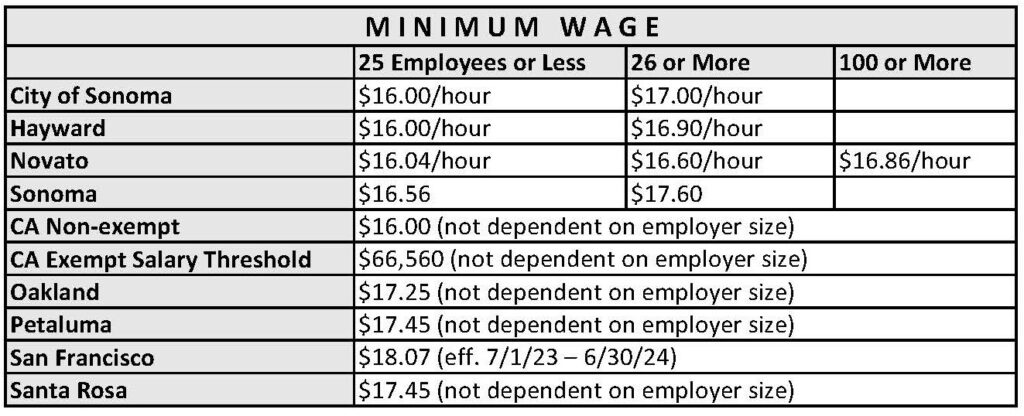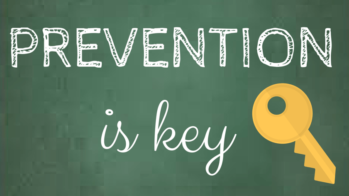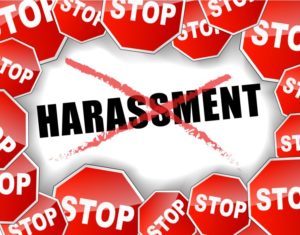Leapsolutions | July 11, 2024

NEW REGULATION ALERT
California’s workplace violence prevention law, SB 553, has been amended to include section 6401.9 which requires that virtually all California employers develop and implement a written workplace violence prevention plan. If you have questions about this new regulation, you are not alone. Leap Solutions is here to support you as you take steps to comply and remain compliant with these new requirements. Let’s start with the basics.

WHAT IS WORKPLACE VIOLENCE?
Workplace violence is any act of violence or threat of violence that occurs in a place of employment. This does not include lawful acts of self-defense or defense of others.
WHO DOES THIS LAW APPLY TO?
This law applies to all employers, employees, places of employment, and employer-provided housing, except those listed in subsection (b) of Labor Code 6401.9. (https://leginfo.legislature.ca.gov/faces/billNavClient.xhtml?bill_id=202320240SB553)
WHEN DOES THIS LAW TAKE EFFECT?
In effect since July 1, 2024, affected California employers are required to implement their workplace violence prevention plan and begin employee training by this date. If you have not implemented your program, Leap Solutions is ready to assist you.

WHAT IS YOUR ROLE IN THE PLAN AS AN EMPLOYER?
Your role as an employer is to create and implement a workplace violence prevention plan; create and maintain a violent incident log; train employees on the plan, workplace violence hazard identification, and reporting; keep records of the plan in a place that is easily accessible to employees; and continue to update the plan and maintain record-keeping as new situations arise.
BEYOND THE BASICS
SB 553 outlines specific requirements for each section of your plan and Leap Solutions is prepared to walk you through each one. Our dedicated and knowledgeable team collaborates with every client to ensure a thorough understanding of these requirements and how they affect your organization. This partnership results in a tailor-made workplace violence prevention plan and training that incorporates your organization’s unique circumstances.

WORKPLACE VIOLENCE PREVENTION FAQ
Is there an interactive training requirement?
The training must include opportunities for interactive questions and answers with a person knowledgeable about the plan.
Are we required to have active shooter preparedness training?
As a part of your hazard assessment, you may want to consider whether you need to conduct active shooter preparedness training, but there is not a specific requirement to do so under this law. You may want to check with your insurance agency to see if your insurance policies have training requirements, including active shooter.
If we have multiple work sites, do we need to have a customized plan for each, or is one general plan acceptable?
If different worksites have different hazards, the plans would need to be tailored to each individual worksite. If the worksites share similar hazards, the plans would be more uniform across locations. For example, a manufacturer might have offsite warehouses, so the plans would have similar elements, but would include different hazards; therefore, the plans would need to be customized for each location.
Are we required to implement plans for locations outside California?
No, this law only applies to California.
Do we have to report workplace violence events to Cal OSHA?
You only need to report serious injuries or fatalities as required by Cal OSHA regulations. The workplace violence prevention law did not establish new reporting requirements.
Do workplace violent incidents go on the OSHA 300 Log?
You are required to record information on the 300 Log only if the employee was injured and meets the requirements of recording on the 300 Log.
How can we make the plan accessible to employees?
Options include posting your plan on your intranet or software platform, or you can make it available in binders or on bulletin boards in common areas at your worksite.
Are animal attacks considered workplace violence?
Yes.

Leap Solutions is ready to come alongside you at any point in the process to provide a customized plan for your organization, support implementation, and/or plan and conduct employee trainings in English and Spanish. We are available to assist from start to finish and will even remain a resource to help you stay compliant through our flexible HR2Leap package. Reach out to us at 707-527-0969 or info@leapsolutions.com to receive a quote for your custom-built plan.
Are You Ready to Leap?
*****
Leap Solutions, a division of George Petersen Insurance Agency, is a diverse group of highly skilled management, organizational development, executive search and recruitment, and human resources professionals who have spent decades doing what we feel passionate about: helping you feel passionate about what you do. We are available to work with you to develop practical solutions and smart planning decisions for your organization’s immediate, near, and long-term needs.
To print this article, Click Here
Leapsolutions | December 19, 2023
By, Tracy Emmerich & Tracy Long
The California legislature saw fit to pass several employment laws that will go into effect on January 1, 2024 and beyond. As always, Leap Solutions is here to help you face them proactively and confidently. Our HR professionals have the knowledge, expertise, and resources to inform and guide you through ever-changing legislation and empower your company to thrive in 2024 and beyond.
In this issue of our newsletter:
- 2024 Minimum Wage
- Updates on Current and New Legislative Bills
- Meal and Rest Break Premium Pay
- Ongoing Mandatory Harassment Prevention Training
- Employee Handbook Review/Updates
- Injury and Illness Prevention Program and COVID Prevention Plan
- California Labor Law Posters
2024 MINIMUM WAGE

January 1, 2024 brings another increase in the California state hourly minimum wage for both non-exempt and exempt salary workers. Due to the increased annual inflation rate, the minimum wage was increased to $16.00 per hour regardless of the number of workers employed by an employer. The exempt salary threshold is two times the minimum wage, therefore, it increases to $66,560 for employers regardless of the number of workers employed.
Local (city and county) non-exempt minimum wage ordinance changes became effective July 1, 2023 to June 30, 2024. We recommend that a compensation review be conducted as soon as possible to ensure that you have identified those in your workforce who need to be brought to the minimum. Your review may reveal wage compression or other issues that you may want/need to address.

UPDATES ON LEGISLATIVE BILLS
The following is a summary of recent legislation and is not intended as legal advice.
New I-9 Form
Effective 11/1/2023 – Applies to All Employers
The new Form I-9, Employment Eligibility Verification, which was released on August 1, 2023, must be used for all new hires, effective November 1, 2023. Some of the changes include reducing sections 1 and 2 to one page. The Lists of Acceptable Documents page has been revised to include acceptable receipts in addition to physical documents. The updated Form I-9 also provides guidance and links to information on automatic extensions of employment authorization documentation. The new I-9 form is available in on the USCIS website (www.uscis.gov).
What this could mean for you: Update new hire packets to include the new I-9 form.
SB 616: Paid Sick Leave Expansion
Effective 1/1/2024 – Applies to All Employers
Under the current Paid Sick Leave, all employers are required to provide up to 24 hours or three days (whichever is greater) of paid sick leave per year. Under the new law, employers will be required to increase that amount to 40 hours per year. Employers may still front load the hours at the beginning of the year with no carry over or accrue paid sick leave based on hours worked (one hour for every 30 hours worked) with two times the annual accrual capped at 80 hours or 10 days (whichever is greater). Employers who front load paid sick leave or accrue based on payroll cycles (not actual hours worked) must ensure that an employee has no less than 24 hours by their 120^th day and an additional 16 hours (40 annual hours) of accrued sick leave by their 200th calendar day of employment. Employers using the accrual method with a cap of 80 hours can still limit employees paid sick leave to 40 hours or 5 days per year, whichever is greater. In addition, SB 616 extends some protections to these
employees covered by a collective bargaining agreement such as covered uses, replacement worker prohibition, and anti-retaliation protections.
What this could mean for you: Review and update existing handbook policies/practices and forms to ensure that employees are aware of the expanded paid sick leave expansion.
SB 848: Reproductive Loss Leave
Effective: 1/1/2024 – Applies 5+ Employees
SB 848 adds to California’s bereavement leave policy by allowing employees who have worked for the company for at least 30 days to use leave for a “reproductive loss event,” which is defined as “the day or, for a multiple-day event, the final day of a failed adoption, failed surrogacy, miscarriage, stillbirth, or an unsuccessful assisted reproduction.” Employers with 5 or more employees will be required to provide up to five days of leave for a reproductive loss event. The law limits the amount of reproductive loss leave to a maximum of 20 days within a 12-month period should an employee experience multiple losses in a 12-month period. Eligible employees must take the leave within three months of the triggering event; however, the leave does not need to be taken on consecutive days. Leave under the statute is unpaid, unless the employer has an existing policy requiring paid leave. Eligible employees may choose to use any accrued and available sick leave, or other paid time off, for reproductive loss leave.
What this could mean for you: Review and update existing handbook policies/practices and forms to ensure that employees are aware of the expanded leave expansion.

AB 2188, SB 700: Cannabis Employment Discrimination
Effective: 1/1/2024 – Applies to All Employers
This new protection prohibits discrimination based on the person’s use of cannabis off the job and away from the workplace, which includes an employer-required drug screening test that has found the person to have “non-psychoactive” cannabis metabolites in their hair, blood, urine, or other bodily fluids. In addition, an employer cannot request information from a job applicant relating to the applicant’s prior use of cannabis, including in the applicant’s criminal history. Exceptions apply for certain trades and where federal laws require applicants or employees to be tested for controlled substances. An employer may discriminate in hiring, or any term or condition of employment, or otherwise penalize a person based on scientifically valid preemployment drug screening that do not screen for non-psychoactive cannabis metabolites.
What this could mean for you: Employers may need to look for alternative testing to determine impairment. Employers may still maintain a drug-free and alcohol-free workplace policy where employees may not possess, be impaired by, or use cannabis on the job.
SB 699, AB 1076: Non-Compete Agreements Unlawful
Effective: 1/1/2024 – Applies to All Employers
Most noncompetition agreements are unenforceable in California. Agreements that restrict an employee’s ability to pursue similar employment after leaving a job are prohibited unless a noncompetition agreement clearly falls under one of the following exceptions:
- Trade secrets protections, which can legally restrict an employee’s ability to use confidential information or company-defined trade secrets.
- Sale of a business, which can legally restrict a seller’s ability to compete with the buyer in the geographic location where the seller had carried on his/her business.
- Dissolution of a partnership, which can legally define a geographic area within which one of the partners cannot conduct a similar business.
The new statute creates a private right of action for employees whose agreements include restrictive covenants for any current, former, or even prospective employee who successfully brings suit over an employer’s use of those restrictive covenants. An employer that may have included a noncompete clause in an employment contract, requires the company to issue a notice to all current and former employees who were employed after January 1, 2022, that the noncompete clauses in their contracts are void. The deadline for this notice is February 14, 2024.
What this could mean for you: Employers should review any non-compete agreements and send out the required notices by February 14, 2024 if applicable.
Cal. Code Regs. Tit. 2, § 11017.1.: Criminal History Inquiries
Effective: 7/1/2024 – Applies to All Employers
New regulations prohibit employers from inquiring into, considering, distributing, or disseminating information related to the criminal history of an applicant until after the employer has made a conditional offer of employment to the applicant. If an employer intends to deny an applicant the employment position they were conditionally offered based solely or in part on the applicant’s conviction history, the employer must first conduct an individualized assessment to determine if there is a direct and adverse relationship with the specific duties of the job that justify denying the applicant the position and that it is job-related and consistent with business necessity. If, after conducting an individualized assessment, an employer makes a preliminary decision that the applicant’s conviction history disqualifies them from the employment conditionally offered, the employer shall notify the applicant in writing. Employers must then permit applicants to respond by providing evidence of rehabilitation or mitigating circumstances and/or evidence challenging the accuracy of the conviction history report that is the basis for the preliminary decision to rescind the offer. Employers shall consider any information submitted by an applicant before making a final decision regarding whether to rescind a conditional offer.
What this could mean for you: Employers who conduct criminal background checks should update their background policy and create a procedure for reviewing all background checks for compliance.

SB 553: Workplace Violence Prevention Program
Effective: 7/1/2024 – Applies to All Employers
Under the California Division of Occupational Safety and Health (Cal/OSHA, covered employers will be required to develop and implement a workplace violence prevention plan (WVPP) as part of their required Injury and Illness Prevention Plans (IIPP) by July 1, 2024. Employers will also have to provide training, create workplace violence incident logs, and keep various records for up to five years.
What this could mean for you: Employers should review their current Violence in the Workplace policy and begin to assess relevant factors to determine the risk level your organization faces for workplace violence such as location, previous incidents of violence, the presence of cash on site. Leap will be available to help write your Workplace Violence Prevention Plan and conduct on-site training for your employees to help you stay in compliance.
SB 476: Food Handler Card Costs
Effective: 01/01/2024 – Applies to all Employers
Employees who work in a food facility or mobile food facility (catering or produce trucks, carts, etc.) who are involved in the preparation, storage, or service of food, is a food handler and needs a California food handler card. California requires relevant workers to obtain a food handler card within 30 days of their date of hire. Under SB 476, employers will be required to cover the cost associated with obtaining a food handler card, including the cost of the test, and paying employees at their regular rate of pay for any time spent completing the training and taking the test. Currently employees can complete the training through American National Standards Institute (ANSI). Under SB 476 the California Department of Public Health will be required to post a list or a link to all certified food handler training programs, including the cost of each program on their website by January 1, 2025.
What this could mean for you: Employers should update their written food handler and timekeeping policies to include the employer paying for food handler cards and all time spent in such training and plan how employees should report it on their timesheets.
OTHER EMPLOYMENT LAWS TO KEEP IN MIND FOR 2024
Meal and Rest Break Premium Pay
Applies to All Employers
The burden of meal break compliance proof rests squarely on the employer. It is imperative that non-exempt employees document their meal breaks daily on their time records and that premiums are paid timely. Premiums must be reported on the employee’s pay statement when an employee misses or does not complete their full (at least 30 minutes) meal period. Meal and/or rest break premium pay is considered “wages,” similar to overtime premium pay, reporting time pay, or split-shift pay. Failure to pay can cause expensive waiting time and wage statement penalties. In very limited situations, when the nature of the employee’s duties prevents the employee from being relieved of all duty, certain designated employees may be authorized to work an “on-duty meal period.” (An example would be a lone cashier at a gas station who works the night shift.) An employee will be permitted to take an on-duty meal period only if the nature of their job requires an on-duty meal period, and the employee and the company have agreed, in advance, and in writing, to an on-duty meal period. In this situation, the on-duty meal period will be paid and treated as hours worked.

Ongoing Mandatory Harassment Prevention Training
Applies to 5+ Employers
Employers with five or more employees must provide one hour of sexual harassment prevention training to nonsupervisory employees and two hours of training to employees with supervisory authority. (This includes part-time, temporary, seasonal, and on-call staff as well as independent contractors, workers from staffing agencies, and employees outside of California, although you are only required to train supervisors located in California or those who supervise any California employees.)
- Training must take place within six months of hire or promotion and every two years thereafter.
- Seasonal and temporary employees or employees hired to work less than 6 months, must be trained within 30 calendar days after hire or within 100 hours worked, whichever is earlier.
- Employers are not required to train employees who are employed for fewer than 30 calendar days and work for fewer than 100 hours.
Leap Solutions can provide interactive onsite or online Harassment Prevention training for your employees!
EMPLOYEE HANDBOOK REVIEW/UPDATES
If your employee handbook has not been reviewed in over a year, you may have missed out on important changes that could affect employee retention and increase your liability. Our HR consultants work with you to customize your handbook while ensuring that you and your employees have clear, up-to-date information to inform and to instruct.
INJURY AND ILLNESS PREVENTION PROGRAM AND COVID PREVENTION PLAN
A written, effective Injury and Illness Prevention Program (IIPP) which includes a COVID Prevention Plan (CPP) is required for every California employer. We can develop a plan with you to ensure that you are in compliance!
DON’T FORGET TO UPDATE YOUR CALIFORNIA LABOR LAW POSTERS TO REFLECT 2024 CHANGES!
The California Department of Industrial Relations requires employers to post current information related to wages, hours and working conditions in an area frequented by employees where it may be easily read during the workday. Remote employees also need to receive required notices. CalChamber Store can help> Labor Law Posters

LEAPING FORWARD
The HR professionals at Leap Solutions can demystify these and many other complicated new employment and labor laws for you, your employees and your hiring managers and supervisors. Count on us to guide you through the complexities of each new piece of legislation and help you respond efficiently, reduce legal risk, minimize expenses, and achieve the peace of mind that comes with keeping your organization compliant and your people safe, strong, and successful.
Are You Ready to Leap into 2024?
*****
Leap Solutions is a diverse group of highly skilled management, organizational development, and human resources, and executive search and recruitment professionals who have spent decades doing what we feel passionate about helping you feel passionate about what you do. Our HR specialists can help you get a handle on the ever-changing COVID-19 guidelines, programs, and legislation that may impact you and your employees. We are available to work with you to develop practical solutions and smart planning decisions for your organization’s immediate, near, and long-term needs.
To print this article, Click Here


Tracy Emmerich | March 25, 2021
Harassment can lead to decreased productivity, increased turnover, possible legal costs, and potentially irreparable harm to a company’s reputation. Leap Solutions’ HR specialists can help your company achieve compliance by providing harassment prevention training for all of your associates. We are dedicated to keeping you informed and empowered with relevant, up-to-the-minute information and resources, working with you to develop practical solutions and smart planning decisions for your organization.
In this issue of our newsletter:
- Harassment Prevention Training
- Take note — anyone not yet trained, or trained in 2019, needs to have harassment prevention training in 2021!
- All employers must:

Harassment Prevention Training
In 2005, Governor Arnold Schwarzenegger signed AB 1825, which required that employers with 50 or more employees provide supervisory employees with a mandatory two hours sexual harassment prevention training within six months of hire or promotion, and once every two years thereafter.
In 2018, California extended harassment prevention training under SB 1343, requiring employers with five or more employees to provide two hours of interactive sexual harassment prevention training for all supervisors, and one hour to all non-supervisory employees. Training must be provided for new hires and within six months for those promoted to supervisory roles. The interactive training is required every two years and must include the prevention of abusive conduct.
Still, fifteen years after 2005’s AB 1825, workplace harassment continues to affect employees’ long-term emotional, physical, and economic wellbeing. Harassment can lead to decreased productivity, increased turnover, possible legal costs, and potentially irreparable harm to a company’s reputation.
Many California employers conducted training in 2019 to achieve compliance by the January 1, 2020 deadline, but when Governor Newsom extended the deadline to January 1, 2021, some employers delayed training because of the pandemic, even though the January 2021 deadline did not change.

Take note — anyone not yet trained, or trained in 2019, needs to have harassment prevention training in 2021!
With the advent of required training, there appeared to be fewer quid pro quo harassment claims, and increased hostile work environment complaints or complaints of people ‘just not getting along.’ Was the training so effective that managers no longer offered some kind of benefit in exchange for sexual favors? Not likely. Even with 2017’s Me Too Movement and the heightened awareness it generated, harassment remains, the investigation of New York Governor Andrew Cuomo being the current example.
Is checking the ‘completed’ harassment training box ever enough? Nope.
Are your employees afraid to report harassment? Is your company culture respectful, inclusive, and safe? Has training offered your employees the ability to ask questions that are specific to your industry or to the challenges they face in your work environment? All employees benefit when those questions are examined during in-person training. Engaging, effective interactive training provides employees with great tools to competently and professionally handle harassment matters and boosts employee confidence that they’re in an inclusive, respectful, safe, and responsive workplace.

All employers must:
- distribute a pamphlet on sexual harassment to all employees;
- display the required California Department of Fair Employment and Housing (DFEH) poster, which includes information on the illegality of sexual harassment and discrimination;
- display the required Transgender Rights in the Workplace poster.
Employers with 15 or more employees must also post the Federal Equal Employment Opportunity poster.
Leap Solutions offers English and Spanish training sessions for supervisory and non-supervisory employees. Call us to learn about our custom and group harassment and abusive prevention training.

***
Leap Solutions is a diverse group of highly skilled management, organizational development, and human resources, and executive search and recruitment professionals who have spent decades doing what we feel passionate about helping you feel passionate about what you do. Our HR specialists can help you get a handle on the ever-changing COVID-19 guidelines, programs, and legislation that may impact you and your employees. We are available to work with you to develop practical solutions and smart planning decisions for your organization’s immediate, near, and long-term needs.
To print this article, click here


Tracy Emmerich | February 19, 2020
From the ongoing #MeToo movement to nightly TV coverage of high-profile courtroom trials to the 2020 Oscar-winning movie Bombshell…there’s no question that sexual harassment is on our collective mind. We’re seeing just how damaging harassment can be to an employee’s long-term emotional, physical and economic wellbeing, and we’re recognizing that harassment can lead to decreased productivity, increased turnover, possible legal costs and potentially irreparable harm to a company’s reputation.
The time is now to protect your employees and your company by actively creating and fostering a harassment-free work environment.

It’s the Law…and It’s an Opportunity
As you know, Senate Bill 778 requires employers with five or more employees to complete sexual harassment prevention training by January 1, 2021. That means you should implement the trainings in 2020 in order to be fully compliant by that date.
But sexual harassment prevention training can be so much more than the fulfillment of a government mandate. Done well, it can be a vital opportunity for employers to instill employee faith in your organization’s ability to competently and professionally handle matters of harassment and to boost employee confidence in your absolute commitment to an inclusive, respectful, safe and responsive workplace.
Educating Employees with Harassment Prevention Training
Harassment training helps ensure that no employee feels unsafe at work. At its core is your anti-harassment policy, which is not only helpful but required for any size organization. The experts at Leap Solutions can help you establish an easy-to-understand, comprehensive written policy that is in full compliance with current federal, state and local requirements.
An effective policy for preventing harassment, discrimination and retaliation will:
- List all protected classes and characteristics (including race, national origin, sex, gender identity, gender expression and transgender status)
- Define and provide concrete examples of harassment
- State unequivocally that unlawful harassment is prohibited by all supervisors, coworkers and third parties
- Outline consequences for violating harassment policy
- Explain how employees can complain of harassment or report observed harassment
- Allow employees to report harassment to someone other than a direct supervisor
- Require supervisors to report all complaints to an appropriate representative
- Establish protocols for prompt, thorough, fair and impartial investigations (including careful and objective documentation of witness interviews, factual findings, conclusions and steps taken)
- Assure that investigations will be kept as confidential as possible
- Confirm that employees will not be retaliated against for complaining or participating in a reporting process or investigation
- Include procedures for timely, fair remedial action if misconduct is found (note: the behavior need not rise to the level of a policy or law violation to warrant a remedy, and remedial measures might include counseling, training, a “last chance” agreement, demotion, salary reduction, bonus rescinding or termination)
- State that employees who file a complaint will be notified about the status of the complaint, the results of any investigation and actions taken
Quality harassment prevention training clearly and compellingly communicates the details of your policy and informs and educates your employees about the ins and outs of what does (and what does not) constitute harassment. It reinforces the steps to take in the event that harassment occurs, and it confirms that the company can be trusted to respond with diligence and candor. Moreover, training conveys that you genuinely care about your employees—and about doing everything you can to eliminate harassment from the workplace.

Empowering People with Harassment Prevention Training
Even with today’s heightened awareness, all too many harassment victims and bystanders feel conflicted—they may be embarrassed or ashamed, unsure of whether an incident qualifies as harassment, worried they won’t be believed or the company won’t take appropriate action, or afraid of social and/or professional retaliation. Instead of reporting, they might avoid the harasser, deny or downplay the gravity of the situation, or simply try to forget, ignore or endure the offensive behavior.
The best harassment prevention training, however, can make a world of difference by empowering employees at all levels to:
- Respectfully speak up, in the moment, when they see or experience something they find offensive
- Broaden self-awareness and recognize when and how their own behavior, however well-intended, might be perceived as inappropriate
- Readily identify the kinds of language and behaviors that could be considered harassment
- Know their rights and confidently report any harassment they encounter
- Understand their obligations as bystanders
- Safely intervene when they witness harassing behavior
- Find practical, smart ways to encourage and support coworker victims
- Remain confident that their fellow team members will stand behind them if an incident occurs
Tailored harassment prevention training further empowers managers and supervisors to:
- Pay close attention to employees and employee reactions, both spoken and unspoken
- Recognize different types of harassment
- Address inappropriate behavior calmly and expediently
- Understand the responsibilities inherent to positions of influence
- Build relationships in which employees feel secure voicing concerns
- Refer to a set standard when a harassment complaint is made
Finally, harassment prevention training empowers and equips company leaders with systems, tools and resources to:
- Support victims
- Protect against false allegations
- Avoid legal liability
- Handle any and all complaints promptly, confidentially and fairly
At Leap Solutions, we’re as dedicated to protecting your employees and reducing and preventing harassment in the workplace as you are. We can customize trainings to your specific workplace and your unique employees, and you can count on our seasoned facilitators to engage your employees with real-world scenarios, specific and relevant situational examples, and expert answers to all manner of questions.
As you can imagine, the lasting benefits of Leap’s harassment trainings extend well beyond the workplace. After completing the training, individuals experience far greater self-awareness and are better equipped to identify and appropriately respond to harassment anywhere it might take place.
Building Community through Harassment Prevention Training
Best of all, training builds community. When everyone is well informed and on the same page, and employees in all positions are consistently held accountable, every individual plays an essential role in the collective solution to harassment and the creation of safe, considerate happy workplaces.
Call us to learn about custom and/or group harassment prevention training opportunities, or sign up online for one of our pre-scheduled 2020 trainings—we offer morning and afternoon sessions for both supervisory and non-supervisory employees and in both English and Spanish.
2020 Sexual Harassment and Abusive Conduct Prevention Training
All sessions will be held at the Sonoma County Farm Bureau 3589 Westwind Blvd Santa Rosa, CA 95403
Sexual Harassment and Abusive Conduct Prevention Training – SPANISH
- Date: Wednesday – April 8, 2020
- Time: 8:30 am – 9:30 am (non-supervisory employees)
- Time: 8:30 am – 10:30 am (supervisory employees)
Sexual Harassment and Abusive Conduct Prevention Training – ENGLISH
- Date: Wednesday – April 8, 2020
- Time: 1:00 pm – 2:00 pm (non-supervisory employees)
- Time: 1:00 pm – 3:00 pm (supervisory employees)
Sexual Harassment and Abusive Conduct Prevention Training – SPANISH
- Date: Wednesday – June 10, 2020
- Time: 8:30 am – 9:30 am (non-supervisory employees)
- Time: 8:30 am – 10:30 am (supervisory employees)
Sexual Harassment and Abusive Conduct Prevention Training – ENGLISH
- Date: Wednesday – June 10, 2020
- Time: 1:00 pm – 2:00 pm (non-supervisory employees)
- Time: 1:00 pm – 3:00 pm (supervisory employees)
Sexual Harassment and Abusive Conduct Prevention Training – SPANISH
- Date: Wednesday – September 9, 2020
- Time: 8:30 am – 9:30 am (non-supervisory employees)
- Time: 8:30 am – 10:30 am (supervisory employees)
Sexual Harassment and Abusive Conduct Prevention Training – ENGLISH
- Date: Wednesday – September 9, 2020
- Time: 1:00 pm – 2:00 pm (non-supervisory employees)
- Time: 1:00 pm – 3:00 pm (supervisory employees)
Sexual Harassment and Abusive Conduct Prevention Training – SPANISH
- Date: Wednesday – December 9, 2020
- Time: 8:30 am – 9:30 am (non-supervisory employees)
- Time: 8:30 am – 10:30 am (supervisory employees)
Sexual Harassment and Abusive Conduct Prevention Training – ENGLISH
- Date: Wednesday – December 9, 2020
- Time: 1:00 pm – 2:00 pm (non-supervisory employees)
- Time: 1:00 pm – 3:00 pm (supervisory employees)
Tracy Emmerich
Leap Solutions Group
707-527-0969
info@leapsolutions.com
Click here to print this newsletter

Chuck McPherson | May 12, 2019
When workers are in short supply and high demand, it can be tempting for employers to gratefully snatch up any willing candidate with the right background and expertise for a job. But in today’s incredibly tight labor market, that hiring approach is short-sighted; holding out for the right cultural fit can mean all the difference between a ho-hum, get-the-job-done placement and a committed, lasting employee who not only shares but actively contributes to your organization’s mission, vision and growth.

Fit Philosophy
When you hire someone, you don’t invest in a set of skills—you invest in a person. That’s why the recruiting experts at Leap Solutions believe in hiring for cultural fit first and foremost. Job skills matter, of course, but many of those can be taught. Equally as important are the intangibles: a candidate’s personality and character, values and ethics, curiosity and insight, motivation and potential and more. These are the largely un-teachable qualities that determine cultural fitness, and these are the traits that can positively and powerfully impact the success of your organization.
Every hiring opportunity is a chance to build an even more solid, collaborative and diversified team. Someone ideally suited to your organization’s culture will feel at ease with the social customs, working habits, atmosphere, energy and pace of your organization. A great cultural fit is likely to result in a seamless job transition and a longer-term, far more rewarding placement for both employee and employer.
Philosophy in Action
Prioritizing cultural fit means seeing positions beyond their obvious and immediate job descriptions and seeing candidates beyond the skills and experience listed on their resumes. That’s why we advise our clients to:
- Reflect on your culture. You can’t find your best cultural fit without first knowing your culture. When you partner with Leap, we do everything possible to gauge the pulse of your organization and what it takes to thrive there. We provide invaluable outside objectivity and seasoned insight as we guide you in determining the kinds of people who will align with your organization’s core values while bringing fresh enthusiasm and unique perspectives, talents and ideas to your workplace.
- Establish the non-negotiables. We help you sort the essential job skills, background and qualifications from the desired ones; in many (and perhaps most) cases, there’s more wiggle room than you might think. That said, no matter how much you like a candidate, you can’t settle for anything less than what you genuinely need for success in the role.
- Be open to train. Don’t miss out on an otherwise ideal candidate by requiring an easily trainable skill or body of knowledge. As you zero in on what you’re truly looking for in an applicant, be realistic about any anticipated needs for coaching, training and/or mentoring to ready that person for the position. As a bonus, you’ll be able to arrange for customized, focused, high-impact learning that can virtually ensure success.
- See potential. While we might suggest you consider training for certain skills, we’ll encourage you to stay true to the type of person you want. At Leap Solutions, we approach our work from a place of genuine curiosity about every person, and we’re known for our ability to see past what’s on paper—to recognize what’s overblown or undersold on a resume, for instance. We never lose sight of our ultimate goal: to steer you toward the longer-term, perfect-fit hire you deserve.
- Look to the future. As you begin to make more strategic, thoughtful hiring decisions, you will naturally start to put those decisions into the perspective of bigger-picture issues such as succession planning. Always keeping an eye to the future, savvy employers think about which positions might be opening up down the line and provide the career development and advancement opportunities that allow employees and companies to grow together.

- Interview unconventionally. Assessing skillset can be straightforward, but for a fuller indication of how a candidate might fit into your culture, you’ll want to use creative interview approaches, including behavioral-based questions (“Please share some examples of when you…” or “Tell me about a time this happened to you…”), relevant sample scenarios and role-playing. Don’t be afraid to ask about a candidate’s ideal (and less favorable) culture, communication style, management style and more. The more inquisitive you are, the more fruitful the interview will be.
- Solidify your impressions. Make the most of reference checks to further explore candidates, speak to any potential concerns, etc. Ask the usual questions about how the candidates perform, how they get along on the team and what particular strengths they offer, and then dig deeper with scenario-based questions (e.g. “What might her approach be if she had to deliver bad news to someone?”) to reveal telling, constructive details that can confirm (or challenge) your perceptions.
Commit to Fit
At Leap Solutions, we appreciate that employers can sometimes feel desperate to fill a position, but we won’t let you settle for anything less than the very best fit for your organization. We’re not in the business of high-volume staffing for high-turnover jobs; we’re committed to intentional, well-planned, optimal-fit placements followed up with all the support they need to thrive. When we hit the mark—and we consistently do!—we can be confident that your new hire and your organization will flourish together, now and well into the future.
There’s good recruiting—matching the perfect candidates to their ideal jobs.
And then there’s whole-culture, forward-looking, Leap-style recruiting.

To Print this newsletter, please click here.



















